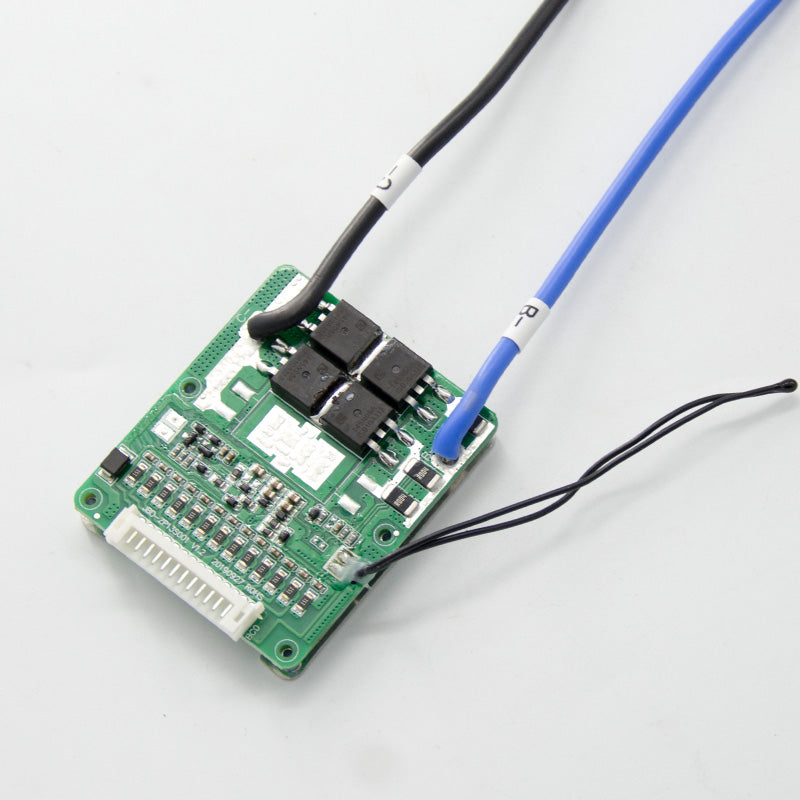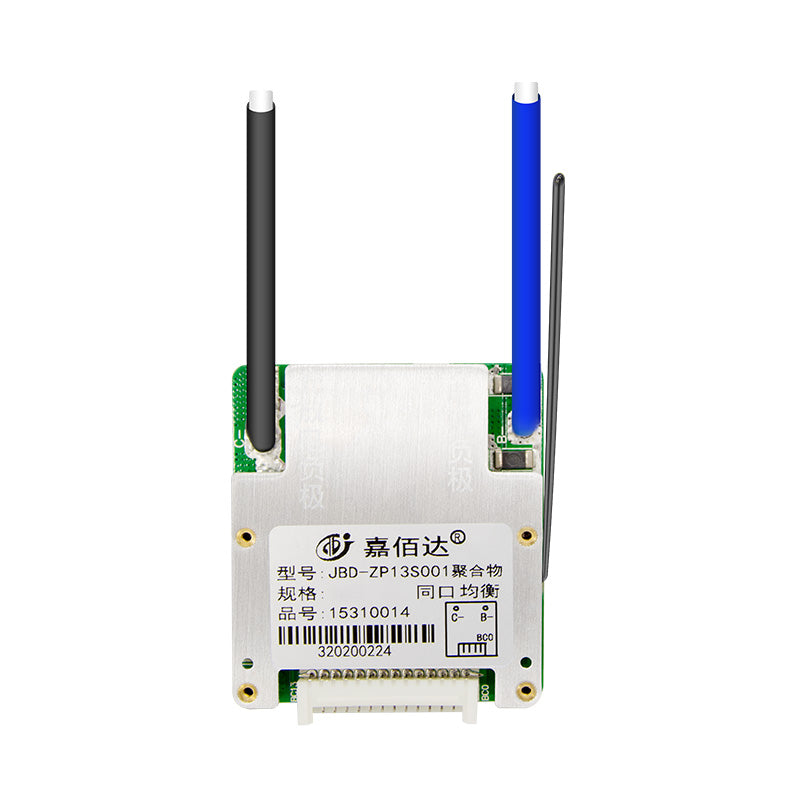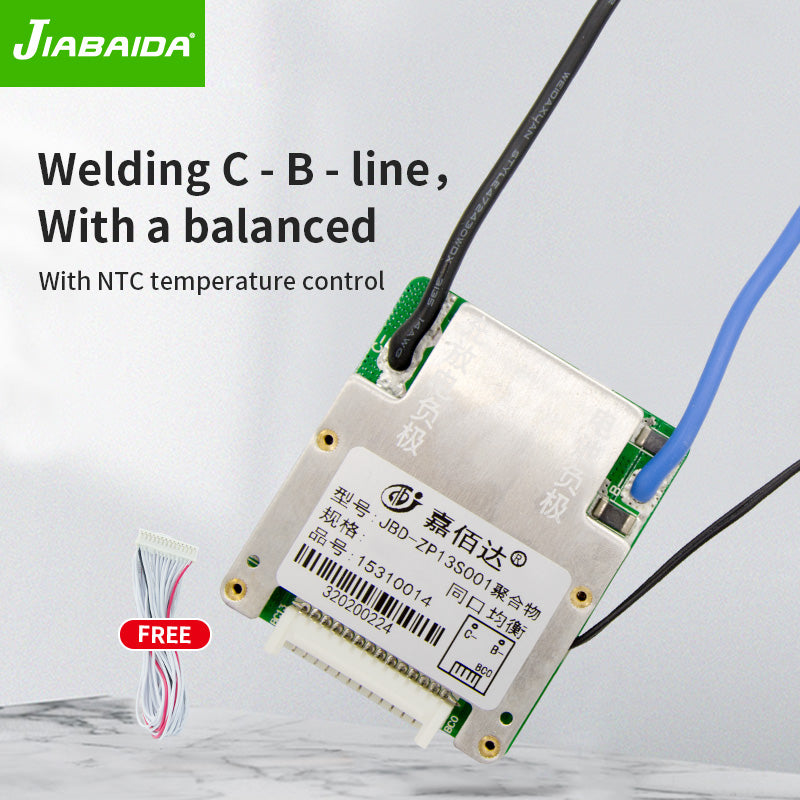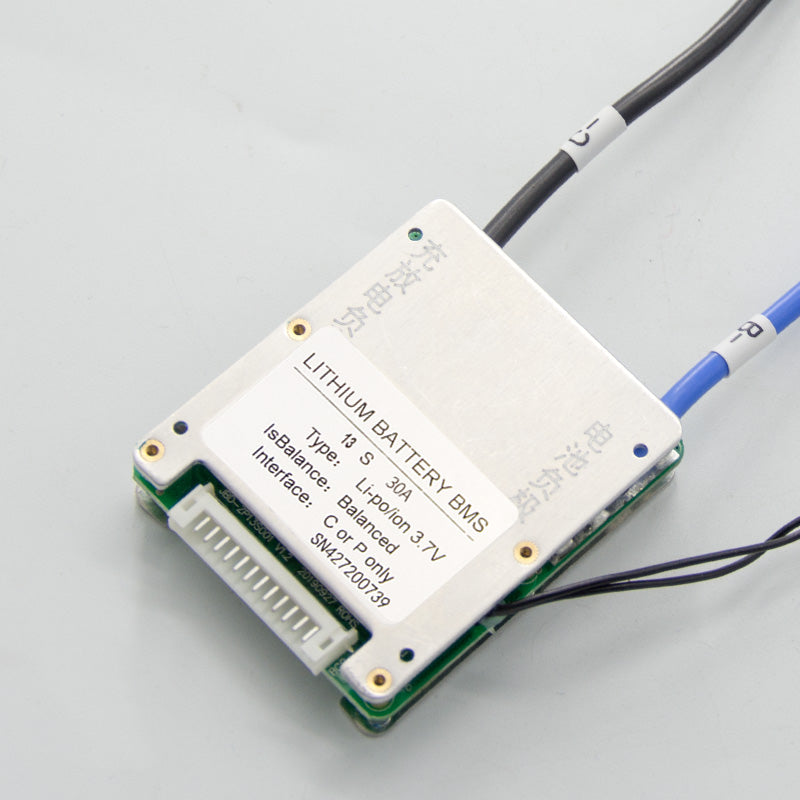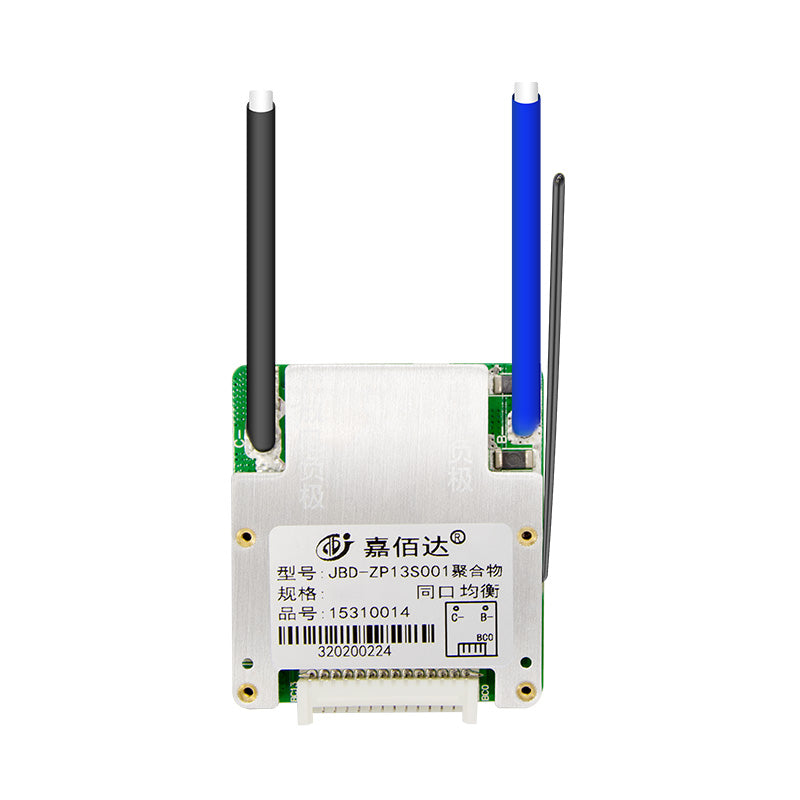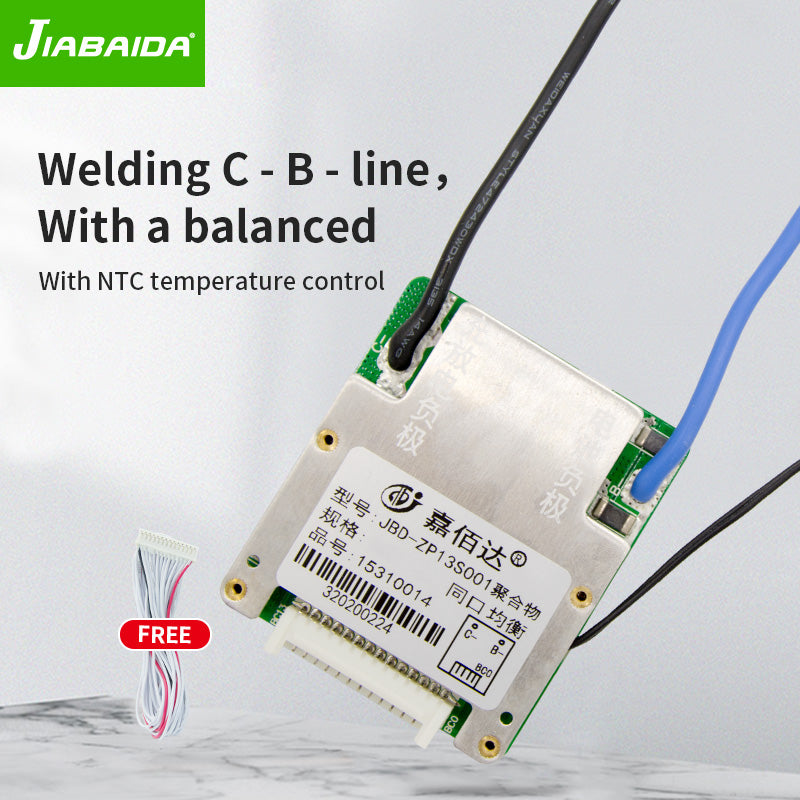Jiabaida BMS
JBD Normal BMS 13S 48V 15A 20A 25A 30A Li-ion Lithium Battery PCB with Balance and NTC
Couldn't load pickup availability
ZP13S001 Normal bms
- Model Number: ZP13S001
- Place of Origin: Guangdong, China
- Supplier Type: manufacturer
- Brand Name: JBD
- Product name: BMS
- Electricity: 30A
- Voltage: 48V
- Number of strings: 13s 48v
- Same port with balance function: Yes
- Usage: Li ion Battery Pack
- Application: E-bike
- Size: 60mm*52mm*10mm
Packaging & Delivery
- Selling Units: Single item
- Single package size: 23X13X16 cm
- Single gross weight: 1.000 kg
- Package Type: Manufactuers will upgrade the packaging sometimes,please refer to the actual object received.
- Package Content : 1* BMS *Balance wires
Product Description
JBD-ZP13S001
JBD-ZP13S001 is designed by Dongguan Jibaida Electronic Technology Co., Ltd, is the same-port protection plate for 13 battery packs of electric bicycles, electric motorcycles and other products. Suitable for different chemical properties of lithium cell, such as lithium ion, lithium polymer, lithium iron phosphate, etc.Protection plate with strong carrying capacity, continuous discharge current up to 30A.
● Section 13 Integrated protection scheme
● Blancing
● Various protection functions for charging and discharging
● Discharge overcurrent, short circuit protection functional processes of hardware
● Temperature protection function
● Very low static current consumption
● Drop line protection function
Application
|
Battery series
|
Battery Rated Voltage
|
|
13
|
3.7V(48V)
|
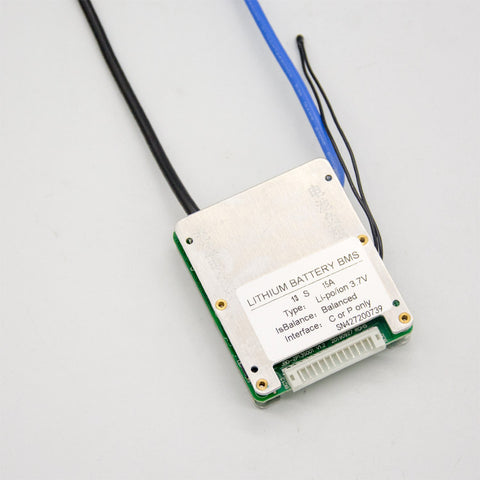
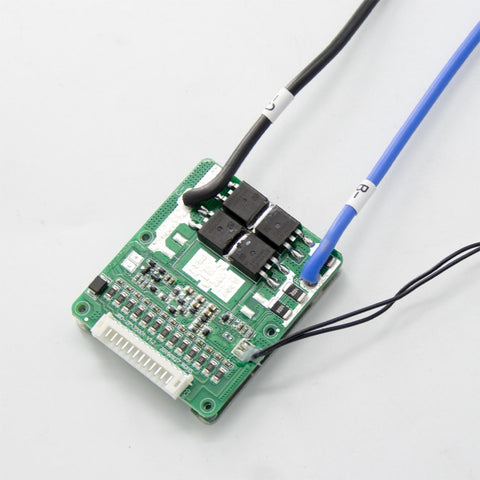

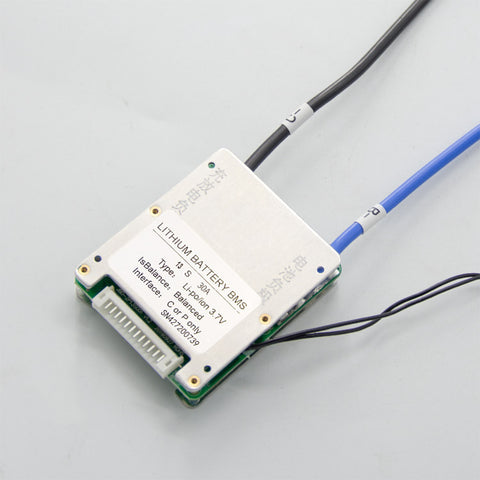
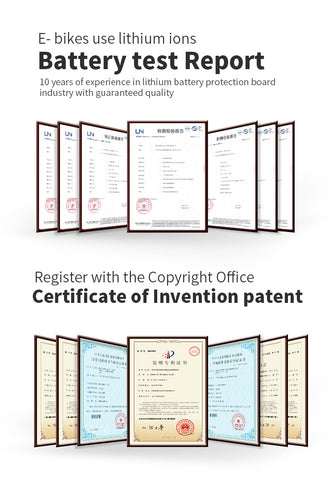
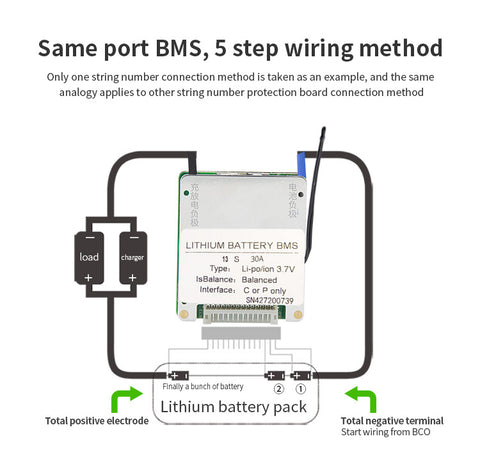

Protection function description
Overcharge protection: When the battery is under the charging state, the voltage keeps going up. When the protection board detects that the voltage of any cell is higher than the overcharge protection value, the protection board will start timing immediately. When the time reaches the overcharge protection delay, the protection board will turn off the charging MOS tube, at that time, it cannot be charged.
Overcharge protection recovery: After the overvoltage protection appears on the protection board, the battery voltage will going down under the static or discharge state of the battery. When the protection board detects that each voltage is lower than the recovery voltage of the overcharge protection, the protection board will output a signal and turn on the charging MOS tube to charge.
Over-discharge protection: When the battery is under the discharge state, the voltage keeps going down. When the protection board detects that the voltage of any cell is lower than the overcharge protection value, the protection board will start timing immediately. When the time reaches the over discharge protection delay, the output signal of the protection board will turn off the discharge MOS tube, the load lock circuit will work, but, it cannot discharge at this time.
Over discharge protection recovery: After the over discharge protection appears on the protection board, the battery voltage will going up under the static or discharge state of the battery. When the protection board detects that each voltage is higher than the recovery voltage of the over discharge protection. At this time, disconnect the load or charge, the protection board will output a signal and turn on the charging MOS tube to charge.
Overcurrent protection: When the battery is under the static or discharge state, the current suddenly increases. When the protection board detects that the current reaches the overcurrent protection value, the protection board will start timing at that time. When the current duration in the circuit reaches the overcurrent protection delay time, the output signal of the protection board will turn off the discharge MOS tube, and the load lock circuit will work. At this time, the discharge cannot be conducted.
Overcurrent protection recovery: After the discharge overcurrent protection appears on the protection board, the discharge MOS tube is turned off, and the current in the loop becomes 0. At this time, the load is disconnected or charged, the output signal of the protection board will turn on the discharge MOS tube to discharge.
When assembling the wiring, weld the cable and the cell correctly, connect the B- of the PCM with the total negative pole of the cell, and then insert the cable into the needle base on the PCM. (Note: different connection modes for different strings, and different connection modes for the same port)


